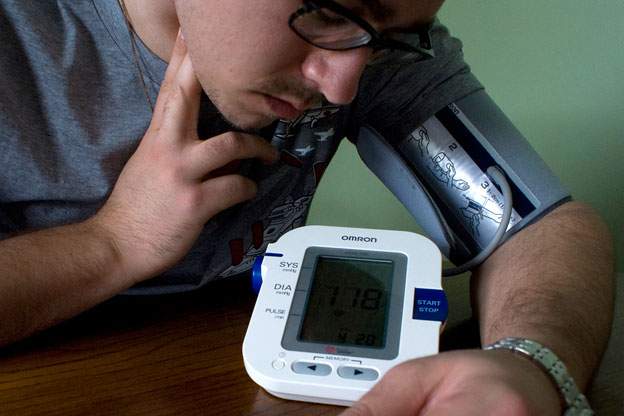
Have you ever been squeezed by a sphygmomanometer? I bet so, because that's the instrument that's used to measure your blood pressure.
You might even know your average blood pressure, but do you know what the two numbers actually measure? Why does the person checking your blood pressure listen with a stethoscope?
Blood pressure measures the pressure in your arteries, which carry blood away from your heart. The two numbers are actually different measurements. The higher number is called the systolic pressure. That's the maximum pressure created when your heart contracts, pushing blood into your arteries. The lower number is called the diastolic pressure. That's the minimum pressure in your arteries as your heart relaxes and refills with blood. So, a reading of 120 over 80, which is average, means that your maximum pressure is 120, and your minimum pressure is 80.
Have you ever wondered what the numbers really measure? No, it's not pounds per square inch! It's millimeters of mercury. The numbers in your reading actually measure how high your blood pressure can push a column of mercury. Older sphygmomanometers had calibrated tubes of mercury like a thermometer, now they have dials.
The stethoscope helps pinpoint those numbers by using sound! The nurse wraps the cuff around your arm and tightens it, squeezing your artery. Then, the nurse slowly loosens the cuff, listening for your pulse with the stethoscope. When your pulse becomes audible, the nurse checks the pressure, that's your systolic number. As the cuff gets looser and looser, your pulse becomes harder to hear. Your diastolic number is the pressure at which your pulse can't be heard anymore!









